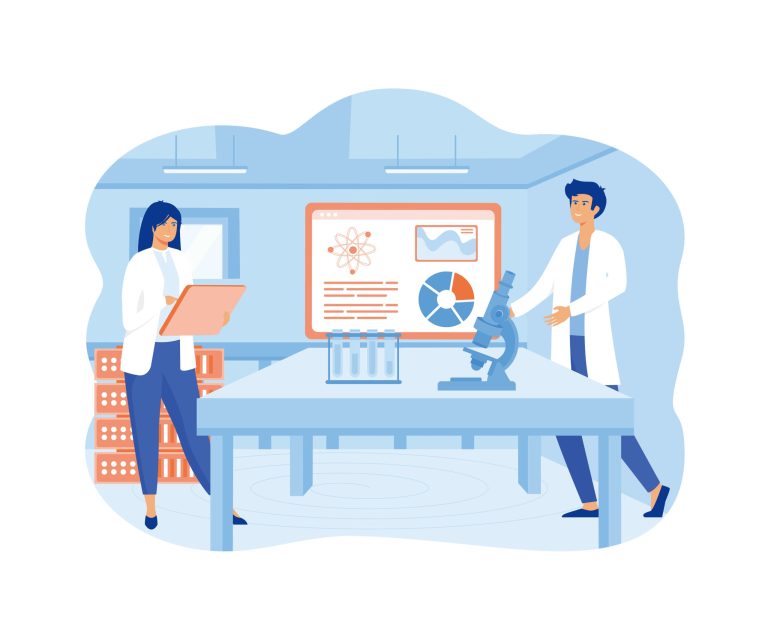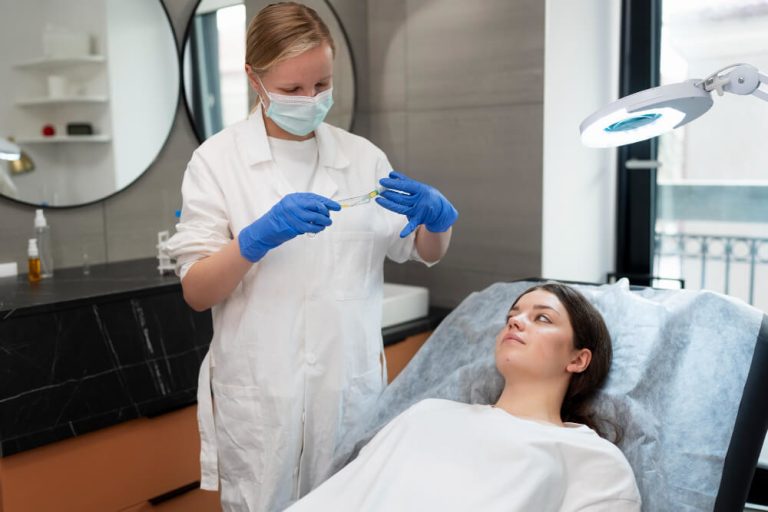The Future of Health: Why Preventative Care Training is Revolutionizing Medicine
The landscape of healthcare is undergoing its most significant transformation in a century. For decades, the prevailing model has been reactive, a system adept at treating symptoms and managing diseases after they have already taken hold. This ‘sick care’ approach, while life-saving in many instances, often misses the vast opportunity to stop illness before it ever begins. A new paradigm is emerging, one centered on proactivity, personalization, and longevity. This is the world of preventative medicine.
At the heart of this revolution is a fundamental shift in medical education and practice. It requires a new set of skills, a different mindset, and a deep understanding of the intricate factors that contribute to lifelong wellness. This is precisely where the importance of specialized preventative care training becomes clear. It is the educational foundation upon which the future of true healthcare is being built, empowering practitioners to become architects of health rather than just repairers of disease.
This proactive model is not just a philosophical change; it is a practical one with profound implications for both patients and clinicians. For individuals, it means gaining the tools and knowledge to optimize their healthspan, the period of life spent in good health. For professionals, it represents a more fulfilling way to practice medicine, focusing on creating lasting wellness and building enduring partnerships with their patients. The journey into preventative care is a journey toward a more resilient, vibrant, and longer-lived society.

What Exactly is Preventative Care?
When many people hear the term ‘preventative care’, their minds often jump to the basics like eating a balanced diet and getting regular exercise. While these are undeniably crucial components, the field of preventative medicine is far more comprehensive and structured. It is a strategic and scientific approach to health that can be understood through three distinct levels of intervention.
First is primary prevention. This is the most proactive form of care, designed to prevent the onset of illness or injury before it ever occurs. This includes well-known strategies like vaccinations to protect against infectious diseases and counseling on lifestyle choices to reduce the risk of chronic conditions like heart disease and type 2 diabetes. It’s about building a strong foundation of health to withstand potential threats.
Next is secondary prevention. This level focuses on early detection and intervention. The goal is to identify diseases in their earliest, most treatable stages, often before any symptoms have become apparent. Common examples include routine screenings like mammograms for breast cancer, colonoscopies for colorectal cancer, and blood pressure checks for hypertension. By catching these issues early, the chances of a successful outcome are dramatically improved.
Finally, there is tertiary prevention. This comes into play when a disease or condition is already established. The objective here is to manage the condition, slow its progression, and prevent further complications or disability. This could involve cardiac rehabilitation programs for heart attack survivors, patient education for managing diabetes, or support groups that help individuals cope with chronic illness. It’s about optimizing quality of life in the face of an existing health challenge.
A professional trained in preventative care understands how to navigate and apply all three levels. They work with patients to create a personalized health roadmap, identifying risks and implementing strategies across the entire spectrum of prevention. This comprehensive view is what separates modern preventative medicine from simple lifestyle advice.

Why is Specialized Training Necessary for Healthcare Professionals?
Traditional medical education has historically placed a heavy emphasis on pharmacology, pathology, and acute intervention. While this training is essential for treating established diseases, it often leaves practitioners less equipped to guide patients in the nuanced art and science of disease prevention. The skills required to be an effective preventative care specialist are distinct and multifaceted.
Preventative medicine demands a deep understanding of risk factor analysis, epidemiology, and biostatistics. A practitioner must be able to interpret population-level data and apply it to an individual patient, identifying their unique risks based on genetics, lifestyle, and environment. This goes far beyond a standard check-up; it is a form of medical detective work aimed at foreseeing and forestalling future health problems.
Furthermore, communication in preventative care is paramount. It involves techniques like motivational interviewing to help patients make lasting behavioral changes. A doctor can tell a patient to lose weight, but a trained preventative specialist knows how to explore that patient’s motivations, barriers, and goals to co-create an achievable plan. This coaching-centric approach fosters a partnership rather than a traditional hierarchical dynamic.
The field is also evolving at a breathtaking pace. New research on nutrition, epigenetics, the microbiome, and exercise science emerges constantly. A commitment to ongoing education is non-negotiable. Professionals who wish to lead in this space must seek out advanced training that formalizes this knowledge. A well-designed curriculum for a preventative medicine fellowship provides the structured, in-depth learning needed to master these complex subjects and apply them effectively in a clinical setting.
This specialized training bridges the gap between knowing that prevention is important and knowing how to implement it successfully. It equips clinicians with the evidence-based tools to move from theory to practice, creating tangible health improvements for their patients. It is the professional backbone of the entire preventative care movement.

How is Technology Shaping the Future of Prevention?
Technology is acting as a powerful catalyst, accelerating the shift toward a more personalized and proactive model of healthcare. The fusion of digital tools with medical science is providing unprecedented insights into human health, transforming how we monitor, understand, and manage our well-being. These advancements are not replacing the healthcare professional; instead, they are empowering them with better data to make more informed decisions.
One of the most visible examples is the rise of wearable technology. Smartwatches, fitness trackers, and continuous glucose monitors collect a constant stream of data on everything from heart rate variability and sleep quality to blood sugar levels and physical activity. In the past, a doctor would get a snapshot of a patient’s health during a 15-minute office visit. Now, they can analyze trends over weeks or months, identifying subtle changes that could signal an emerging health issue long before it becomes critical.
Perhaps the most profound technological shift is occurring in the field of genomics. With the cost of genetic sequencing plummeting, it is now possible to analyze a person’s unique genetic makeup to identify predispositions to certain diseases. This allows for hyper-personalized prevention strategies. For example, someone with a genetic marker for high cholesterol can be counseled on specific dietary and lifestyle interventions from a young age.
However, this deluge of data is only useful in the hands of a trained expert. Interpreting genetic reports and wearable data requires specific expertise. This is why it is increasingly vital for clinicians to become certified in genomics and preventative medicine. This certification ensures they have the skills to translate raw data into actionable, life-changing advice for their patients, moving beyond generic recommendations to truly personalized care.
Telehealth platforms have also broadened the reach of preventative care. Patients can now consult with specialists from the comfort of their homes, making ongoing coaching and follow-up more convenient and consistent. This accessibility is key to the long-term engagement required for successful prevention, solidifying the role of technology as an indispensable partner in modern health.

What is the Role of Regenerative Medicine in Prevention?
While preventative care often focuses on lifestyle and early detection, an exciting and advanced frontier is emerging: regenerative medicine. This field represents the ultimate form of proactivity, aiming not just to slow down damage but to repair and restore the body at a cellular level. It is a cornerstone of longevity science and is fundamentally reshaping our understanding of aging and disease.
For those unfamiliar with the term, it is helpful to understand what regenerative medicine is. At its core, it is a branch of medicine that develops methods to regrow, repair, or replace damaged or diseased cells, organs, or tissues. It includes therapies that use the body’s own healing mechanisms to restore function, effectively turning back the clock on cellular damage.
Key areas within regenerative medicine include stem cell therapy and tissue engineering. Stem cells are unique because they have the potential to develop into many different types of cells in the body. In a therapeutic context, they can be guided to become specific cells that can be used to repair damaged tissues, such as in the heart after a heart attack or in the pancreas for diabetics. This is not about managing a condition; it’s about fundamentally healing the underlying cause.
This approach aligns perfectly with the ethos of prevention. By repairing cellular damage as it occurs, regenerative therapies can prevent the cascading failures that lead to chronic disease and age-related decline. It shifts the focus from managing symptoms to restoring youthful function, which is the ultimate preventative strategy. The scientific community, through organizations like the International Society for Stem Cell Reserach is actively working to advance the understanding and ethical application of these powerful technologies.
Of course, this cutting-edge field is subject to rigorous oversight to ensure safety and efficacy. Regulatory bodies like the U.S. Food and Drug Administration have established specific pathways for the review and approval of regenerative medicine advanced therapy products. This ensures that as the science progresses, the therapies delivered to patients are both safe and effective. The groundbreaking work being done at leading regenerative medical institutues continues to push the boundaries, offering hope for preventing a wide range of conditions that were once considered an inevitable part of aging.

How Does a Preventative Care Model Change the Patient-Doctor Relationship?
The transition from a reactive ‘sick care’ model to a proactive preventative framework does more than just change treatment plans; it fundamentally redefines the relationship between a patient and their healthcare provider. The traditional dynamic, often characterized by a brief, problem-focused encounter, gives way to a continuous, collaborative partnership built on trust, education, and shared goals.
In a preventative care setting, the practitioner’s role evolves from that of a detached expert to a dedicated health coach and long-term guide. The focus shifts from diagnosing and prescribing to listening, educating, and empowering. Conversations are longer and more holistic, exploring not just physical symptoms but also a patient’s lifestyle, stress levels, sleep patterns, and personal health aspirations.
This new model champions patient empowerment. The goal is to provide individuals with the knowledge and tools they need to take an active role in their own health journey. A preventative care expert doesn’t just hand out a diet plan; they explain the ‘why’ behind the recommendations, helping the patient understand their own body and make informed choices that align with their values.
This collaborative approach often extends beyond a single practitioner. True preventative and longevity medicine recognizes that health is multifaceted, requiring a team-based strategy. The complexity of modern health challenges often requires expertise from various disciplines working in concert.
Success in this new paradigm often depends on building a collabrative team tailored to the patient’s needs. This team might include a primary physician with preventative training, a nutritionist, a physical therapist, a health coach, and a mental wellness expert. This integrated approach ensures that all aspects of a patient’s well-being are addressed in a coordinated and comprehensive manner, breaking down the silos that have traditionally fragmented healthcare.
Ultimately, this transformed relationship is one of the most powerful tools in the preventative arsenal. When a patient feels seen, heard, and supported, they are far more likely to remain engaged and committed to the long-term strategies that create lasting health. It turns the practice of medicine into a shared journey toward a longer, healthier life.
Preventative care training is not just another medical specialty; it is the critical infrastructure for the future of health. It provides clinicians with the essential skills in diagnostics, technology, regenerative science, and patient coaching needed to move beyond the limitations of reactive medicine. By embracing this proactive, personalized, and participatory model, we can collectively shift the focus from merely treating sickness to actively cultivating a lifetime of wellness.
Frequently Asked Questions

How long does it take to become proficient in Motivational Interviewing after a training course?
Initial training provides the essential foundation and understanding of Motivational Interviewing’s principles and core skills. However, true proficiency is a journey that extends beyond the classroom and requires consistent, deliberate practice in real-world patient interactions. Most healthcare professionals find that it takes several months of active use to feel comfortable and natural in applying the techniques.
To accelerate this learning curve, ongoing development is crucial for mastering the nuances of the approach. Engaging in activities like peer coaching, session reviews, and advanced workshops helps refine skills and integrate the MI spirit into one’s core communication style. This continuous learning process transforms MI from a set of techniques you use into a more intuitive and effective way you communicate.

Can Motivational Interviewing be effectively used in very short patient appointments?
Yes, MI is highly adaptable and its principles can be powerfully applied even in brief clinical encounters. The goal is not to conduct a full, formal MI session but to infuse the spirit of partnership and evocation into the limited time you have. Using a single open-ended question or offering a simple reflection can significantly alter the tone of a conversation and improve patient engagement.
For example, in a five-minute consultation, instead of simply instructing a patient, you can use an MI-consistent approach to check in on their perspective. A question like, “What are your thoughts on managing this at home?” honors their autonomy and can reveal crucial information. This small shift can make brief interactions more collaborative, respectful, and ultimately more effective.

What is the main difference between using Motivational Interviewing and just being a good listener?
While being a good listener is a critical component of MI, they are fundamentally different. Good listening is often passive or reflective in a general sense, whereas Motivational Interviewing is a directive, goal-oriented clinical method designed to resolve a patient’s ambivalence about a specific behavior change. It uses the core skills of listening to strategically guide the conversation toward the patient’s own motivations for change.
The key distinction lies in intent and technique. An MI practitioner actively listens to identify and reflect “change talk” the patient’s own arguments for changing, while softening “sustain talk,” which are arguments for not changing. This strategic use of skills like complex reflections and summaries makes MI a focused intervention, distinguishing it from the broader, less-structured practice of general active listening.
Discover the most comprehensive functional medicine training, longevity training, and biohacking certification programs designed specifically for healthcare professionals, medics, and clinic owners who want to master regenerative medicine protocols and anti-aging therapies.







